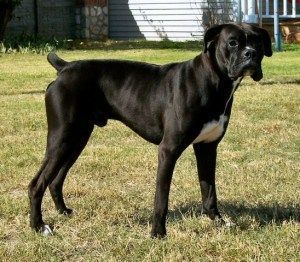Don't wanna be here? Send us removal request.
Text
Exactly where did your puppy originate from? New tree of dog breeds might contain the solution
Where did your pet originate from? New tree of breeds may keep the answer Through the 80-kilogram Great Dane to your 1-kilogram tiny teacup poodle, there seems to be a dog for everybody. Now, the greatest genetic analysis up to now has figured out how those breeds came to be, which ones are really closely related, and the thing that makes some dogs more prone to certain diseases. "They show that by making use of genetics, it is possible to really show the thing that was taking place as [breeders] were making these breeds," says Elinor Karlsson, a computational biologist at the University of Massachusetts Medical Center in Worcester who was simply not involved in the job.
A simple historical past of canines
After dogs were initially domesticated—likely between 15,000 and 30,000 years ago—people picked the best hunters, house guards, and herding animals to be their finest friends, based on their demands. There have been dogs for war as well as for cuddling, for fur and meat, and for being good companions. Today dogs also come in 350 or so breeds, each with specific traits and behaviors. Many arose in past times 200 years. Some research reports have defined the genetics of a relatively small number of breeds, but none has been comprehensive enough to show how and when most came into existence. "The whole period in the middle [domestication and today] has been a black box," Karlsson says.
A brief background of pooches
Elaine Ostrander and Heidi Parker, geneticists at the National Human Genome Research Institute in Bethesda, Baltimore, and their coworkers spent twenty years planning to puppy shows, writing dog fanciers, and having assistance from all corners around the globe to collect DNA samples; in some cases they used currently accumulated data. They weren’t enthusiastic about deciding how and when dogs were tamed, but how all of the breeds developed. Their test now includes 1346 dogs representing 161 breeds, or perhaps not quite 50 % of all kinds of dogs. By comparing the differences at 150,000 spots for each dog's genome, they built a household tree. "The scope associated with analysis is very impressive, [a] tour-de-force on breed evolution," says evolutionary biologist Robert Wayne regarding the University of California, l . a ., who was not associated with the job. Practically all the breeds fell into 23 larger groupings called clades. Although genetically defined, the clades also tended to bring together dogs with similar traits: Thus boxers, bulldogs, and Boston terriers—all bred for strength—fall into one clade; whereas herders like sheepdogs, corgis, and collies belong to another; and hunters like retrievers, spaniels, and setters fall under a 3rd. The grouping of different breeds that share particular jobs implies that ancient breeders likely bred dogs for specific purposes, choosing to take care of those who were best at guarding or herding. Then, in the past 200 years, people subdivided those larger groups into varieties. Nevertheless the data also show how some breeds helped create others, because they share DNA with multiple clades. As one of the earliest small dogs, the pug, which hailed from China, was used in Europe through the 1500s onward to shrink other breeds. Thus, pug dogs that start with letter b is a component of many other toy and small dog genomes, Parker explains.

"This is very exciting!” says Peter Savolainen, an evolutionary geneticist at the Royal Institute of Technology in Solna, Sweden, who was not involved in the task. “It shows how attractive traits in one breed [have] been bred into new breeds." Having these clades may help veterinarians spot prospective genetic concerns, Parker says. For instance, before vets couldn't really understand why an inherited disease called collie eye anomaly, that may distort some other part of the eye, and shows up in collies, border collies, and Australian shepherds, also occurs in Nova Scotia duck tolling retrievers. But the genetic analysis indicates that this retriever has either collie or Australian shepherd ancestors which could have passed on the defective gene. "Mixing has lead to the sharing of specific genomic regions harboring mutations which cause disease in completely different breeds," Wayne says. Wayne and Karlsson both emphasize that to present more details, the experts should work to compare whole genomes—the entire 2.5 billion bases. And also as Savolainen points out, the job "is a very good first faltering step into the origins of all dog breeds, but 1 / 2 of all breeds will always be missing." beedogs.com and Parker say they see this publication as a midpoint, not an endpoint. "We had reached a point where we could commence to do a little of the things we desired to do," Ostrander explains.
1 note
·
View note